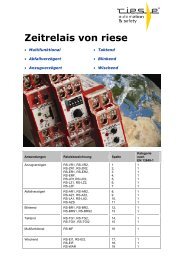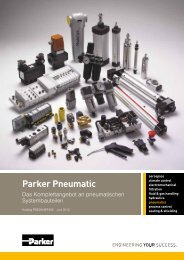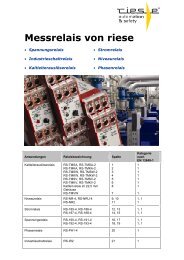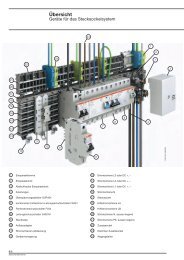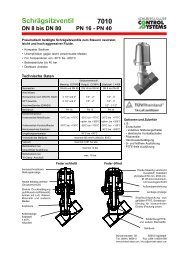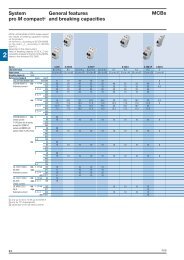Technical details System pro M compact®
Technical details System pro M compact®
Technical details System pro M compact®
- No tags were found...
You also want an ePaper? Increase the reach of your titles
YUMPU automatically turns print PDFs into web optimized ePapers that Google loves.
<strong>System</strong><strong>pro</strong> M compact ®<strong>Technical</strong> <strong>details</strong>Coordination tables: residual current<strong>pro</strong>tection selectivityRCDsSelectivityRCDs raise similar issue to those surrounding the installation of MCBs, and in particular the need toreduce to a minimum the parts of the system out of order in the event of a fault.For RCBOs the <strong>pro</strong>blem of selectivity in the case of short-circuit currents may be handled with thesame specifi c criteria as for MCBs.However, for correct residual current <strong>pro</strong>tection, the more important aspects are linked to trippingtimes. Protection against contact voltages is only effective if the maximum times indicated on thesafety curve are not exceeded.If an electrical system has user devices with earth leakage currents which exceed the normal values(e.g.: presence of capacitor input fi lters inserted between the device phase and earth cables) or ifthe system consists of many user devices, it is good practice to install various RCDs, on the mainbranches, with an upstream main residual current or non-residual current device instead of a singlemain RCD.Horizontal selectivityThe non-residual current main circuit-breaker <strong>pro</strong>vides “horizontal selectivity”, preventing an earthfault at any point on the circuit or small leakage from causing unwanted main circuit-breaker tripping,which would put the entire system out of order.However, in this way, section k of the circuit between the main circuit-breaker and the RCDs remainswithout “active” <strong>pro</strong>tection. Using a main RCD to <strong>pro</strong>tect it would lead to <strong>pro</strong>blems with “verticalselectivity”, which require tripping of the various devices to be co-ordinated, so that service continuityand system safety are not com<strong>pro</strong>mised. In this case, selectivity may be amperometric (partial) orchronometric (total).ABkVertical selectivityVertical selectivity may also be established for residual current tripping, bearing in mind that in workingback from system peripheral branches to the main electrical panels the risk of unskilled personscoming into contact with dangerous parts is signifi cantly reduced.Amperometric (partial) selectivitySelectivity may be created by placing low-sensitivity RCDs upstream and higher-sensitivity RCDsdownstream.An essential condition which must be satisfi ed in order to achieve selective co-ordination is that theIΔ1 value of the breaker upstream (main breaker) is more than double the IΔ2 value of the breakerdownstream. The operative rule to obtain an amperometric (partial) selectivity is IΔn of the upstreambreaker = 3 x IΔn of the downstream breaker (e. g.: F 204, A type, 300 mA upstream; F 202, A type,100 mA downstream).In this case, selectivity is partial and only the downstream breaker trips for earth fault currentsIΔ2< IΔm



